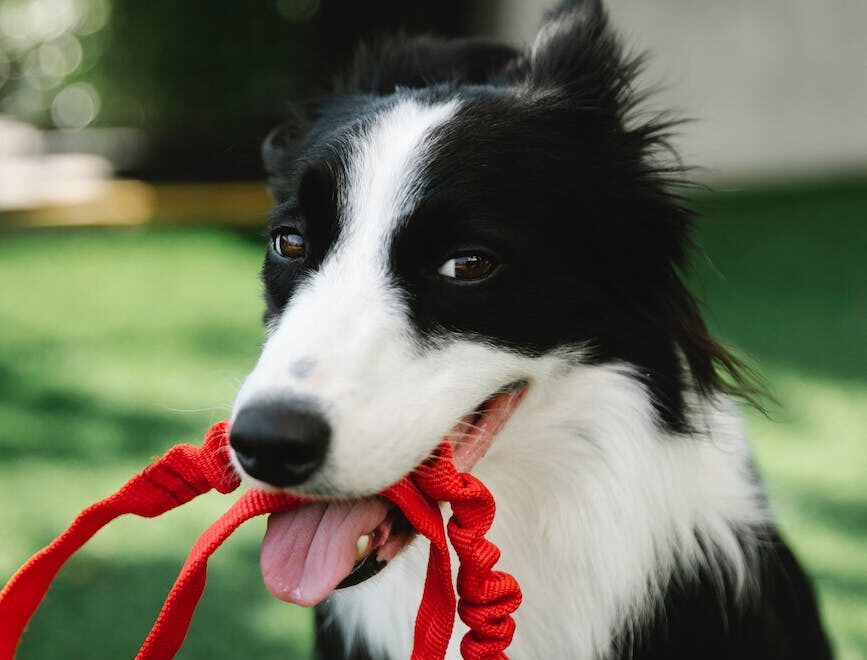A dog in a new household, even if they show evidence of being house trained prior to going home, is in a new environment- new scents, new surfaces, etc.House-soiling is a spatial problem. Your dog has been allowed to eliminate in the wrong place. House-soiling quickly becomes a bad habit because dogs develop strong location, substrate, and olfactory preferences for their improvised indoor toilet areas.
To housetrain your dog quickly, humanely and permanently, you’ll need a dog crate, a number of chew toys and some very tasty treats, such as hot dogs.
These are your main goals:
1. Prevent mistakes.
2. Teach your dog where you would like him to eliminate.
Prevent Mistakes:
Mistakes set a bad precedent and create bad habits, which can be hard to break. Consequently, you must prevent mistakes at all cost. Whenever you are not at home, leave your dog in a long-term confinement area, such as a single room indoors with easy-to-clean floors (bathroom, kitchen or utility room). This will be your dog’s playroom.
Provide your dog with fresh water, a number of stuffed chew toys for entertainment, a comfortable bed in one corner, and a doggy toilet in the corner diagonally opposite from his bed. Your dog will naturally want to eliminate as far as possible from his bed, and so will soon develop the good habit of using his toilet. Good habits are just as hard to break as bad habits!
For a doggy toilet, use a litter box lined with either a roll of turf (ideally) or absorbent housebreaking pads sprinkled with soil or grass clippings, or a litter box filled with concrete pavers, if your dog will eventually be eliminating on concrete.
Thus your dog will develop olfactory and substrate preferences for eliminating on soil, grass or concrete.
Long-term confinement confines your dog’s natural behaviors, such as urinating and defecating, to an area that is protected, thus preventing any mistakes around the house when you are not there. Long-term confinement also helps your dog quickly develop a strong preference for eliminating on soil, grass or concrete.
Teach Your Dog to Eliminate in the Right Place:
When you are at home, confine your dog to a short-term confinement area with a number of stuffed chew toys for entertainment. A portable dog crate makes an ideal doggy den. Alternatively, keep your dog on a short leash fastened to an eye-hook in the base board near her bed, or attach the leash to your belt. This way your dog may settle down beside you while you read, work at the computer, or watch television.
Every hour on the hour, say “Let’s go pee and poop” (or some other appropriate toilet instruction), and hurry your dog, on leash, to her toilet (in your yard, or at curbside outside the front door of your house or apartment building). Stand still with your dog on leash and repeat the instruction to eliminate. Give your dog three minutes to empty her/himself.
When your dog eliminates, praise her/him enthusiastically and offer three very special treats, something they don’t get to eat often (hot dogs are a great choice). Most puppies will urinate within two minutes on each trip to a toilet area, and defecate within three minutes on every other trip. Once your dog realizes that s/he can cash in her urine and feces for tasty treats, s/he will want to eliminate in her toilet area, because soiling the house just does not have comparable fringe benefits. Moreover, after a dozen or so repetitions, you will have taught your dog to eliminate on command.
If your dog does not eliminate during the allotted three-minute toilet break, put her/him back inside the crate for another hour. The purpose of short-term close confinement is to prevent mistakes around the house at those times when you are home but unable to devote undivided attention to your dog, AND to predict when your dog needs to eliminate. Confining a dog to a small space (e.g., a dog crate) inhibits elimination, since the dog does not want to soil her/his sleeping area. Consequently, your dog will want to go immediately upon release from confinement, especially since hurrying to the toilet area will jiggle their bladder and bowels. Since you choose when and where to release your dog, you may choose when your puppy eliminates, and since you can predict when your dog needs to eliminate, you will be there to show her where to go, to reward her/him for going, and to inspect and immediately clean up after your dog.
Never confine a puppy or an un-house-trained adult dog to a crate for longer than an hour. A dog confined too long will be forced to soil the crate and become accustomed to a soiled living area, making the dog extremely difficult to housetrain.
If your dog is sufficiently vaccinated and able to go on walks, make sure s/he eliminates in the yard or in front of your house before each walk. If your dog does not go within three minutes, put her/him back in the crate and try again an hour later. If your dog does go, praise and reward her/him as usual and then say “Let’s go for a walk.” With a no-potty/no-walk policy, you will soon have a very a speedy urinator/defecator. Moreover, elimination close to home facilitates clean-up and disposal; you will not have to stroll the neighborhood weighed down with a bag of dog doo.
